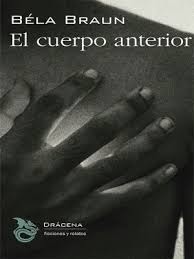Original Language: español
Year of publication: 1934
Valoración: Highly recommended
Before someone asked: no, I have not seen the television series based on this novel, although I have heard some things about it, which I will make a reference later. So the review refers, obviously, and only, to the novel by Luisa Carnés, originally published in 1934 (the date is very relevant) and recently reissued by canned sheet, which is the edition that I have read.
In fact, Luisa Carnés was not an unknown at all when she wrote Tea roomsalthough this was the work that consecrated her as an outstanding writer of her generation. In this novel we accompany Matilde, a young working -class girl from Madrid, in her search for a job that allows her family to bring her family that lives in miserable conditions, and ends up being hired as an employee in a coffee (a “tea room”) of the center. From there, a gallery of characters is built, especially female, each with its social and personal circumstances: Antonia, Felisa, Trini, Esperanza … the person in charge, with her submission servile to the “ogro”, or Laurita, the goddaughter of the pattern that decides to work a little tempor in the coffee of her godfather, or Marta, the young woman determined to get ahead by any means …
A set of complex and differentiated female characters, marked by determination and misery, imperfect and contradictory women, but worthy and (as they say now) resilient. In addition, the novel also offers us a panorama of the time, with its labor and political conflict (at the national and international level, as shown by the character of the Italian ice cream), the police repression, the expansion of the trade unionism and the labor movements … remember that the novel is published in the convulsive years 30, just two years before the civil war, and a five years before the Second World War …
Because this is, without a doubt, a radically compromised novel (and this is what I have heard about the television series: that eliminates this political character and offers a simply costumbrista story). And this manifestly political character is shown in two aspects: in the transmission of a clear class awareness, and in its defense of female liberation.
The first area is manifested above all through Matilde’s character (which could be described as a alter ego of the author, who also held various trades in the textile industry or in the restoration), a woman aware of the social and economic division of the world, and who is not willing to be exploited or to be complacent. It is the one that makes his colleagues reflect on the need to strike, to show solidarity, not to sell or humiliate himself before the powerful, to understand that there are “those above” and “those below”, or as the novel itself says:
“Hey, by the interior staircase.” The first time he heard a free goalkeeper mentally divided society into two halves: those who use the elevator or the main staircase, and “the others”, those of the service staircase; and felt included among the second half.
This social division is also accentuated by Laurita’s character, middle -class woman who “plays” to disguise himself as a worker, but who in the background enjoys conditions and privileges different from the rest of his colleagues:
“Disgusting!” That can be said, girl from the middle class, who will never have lacked the toy or traditional treat, although your dresses and your hats have always been “homemade.” But there are some children who have only seen these ritual treats in the big, unavailable shop windows; Children who, winning their bread, do not know the touch or taste of these exquisite treats.
The feminist purpose of the work is equally explicit and is also entertaining with the plot of the novel: women in the work suffer harassment, violence, are fired, make clandestine abortions, live in a world in which “there were only two paths for women: that of marriage or prostitution” (a few years before, in the Tristana From Galdós, a third option was added, the convent, but the idea is the same). However, the message that transmits the text is not a trigger, but quite the opposite: it is a call to action, liberation, of the new woman:
The new woman, “without guy,” has spoken and answered little Matilde.
But the new woman has also spoken for all the innumerable matildes of the universe
When will your voice be heard?
There is therefore no conflict or contradiction between the labor struggle and the feminist struggle; Both are complemented and needed, as demonstrated by the novel. In a historical moment in which there was no equidistance (E, unhappy, we are now living similar moments), Luisa Carnés builds a novel that is an ideological explosive artifact.
However, it would be a shame for someone to read this review and imagine that Tea Rooms It is a novel of a “dry” or “dating” social realism. (Unhappy, we are used to identifying political literature with realism in its most severe sense). Because Carnés writes like Los Angeles and, especially in the first half of the work, experiences with avant -garde, poetic techniques and styles, mixing voices and visions, showing the world with a cubist technique that deconstructs it in a thousand facets and transmits it through the impressions it causes in the senses. Thus, for example, in the wonderful chapter 3:
All soft, all warm, simple.
The pigeons and sparrows peck the crumbs lost in the walks, and the swans slide pieces of bread along their neck. White. White.
The nurse, with its silver necklaces and its wide coins in the elongated lobes.
The children, white and pink: “I was the banker.” “I was Al Capone.” (Orange towards red).
The gray can shood shoots a stone projectile against the white pigeon, rogged beak.
Clat, clat, clat.
White flight.
(The blood of the East and West …).
White, pink and blue.
(What are you doing in that bank, at the center of that soft molicie, young Revolutionary book reader?).
Or in this wonderful final of Chapter 5:
The night.
Ten hours, tiredness, three pesetas.
Out it is hot.
At the door, an old proclaims the night newspapers.
The public that comes from the Cinemas and theaters issue comments aloud.
Ten hours, tiredness, three pesetas.
Good that this novel, and other texts by Luisa Carnés, and in general many other texts of many other invisible or forgotten writers, are being recovered in recent years. It is necessary to rewrite, and rearrange, what we thought about knowing about literary history.
Source: https://unlibroaldia.blogspot.com/2025/05/luisa-carnes-tea-rooms.html


